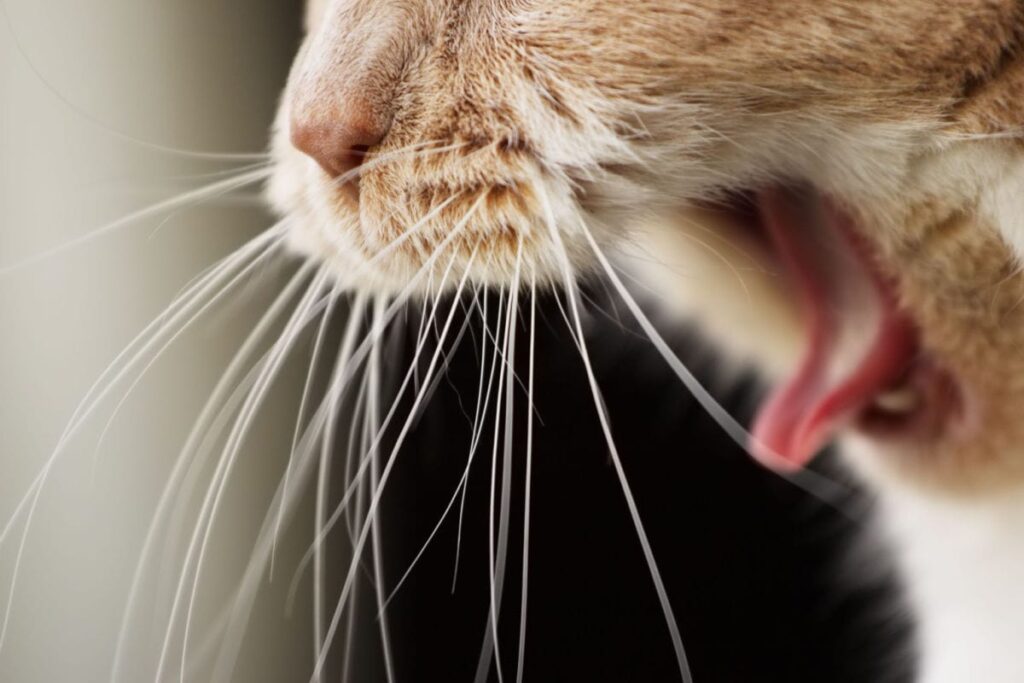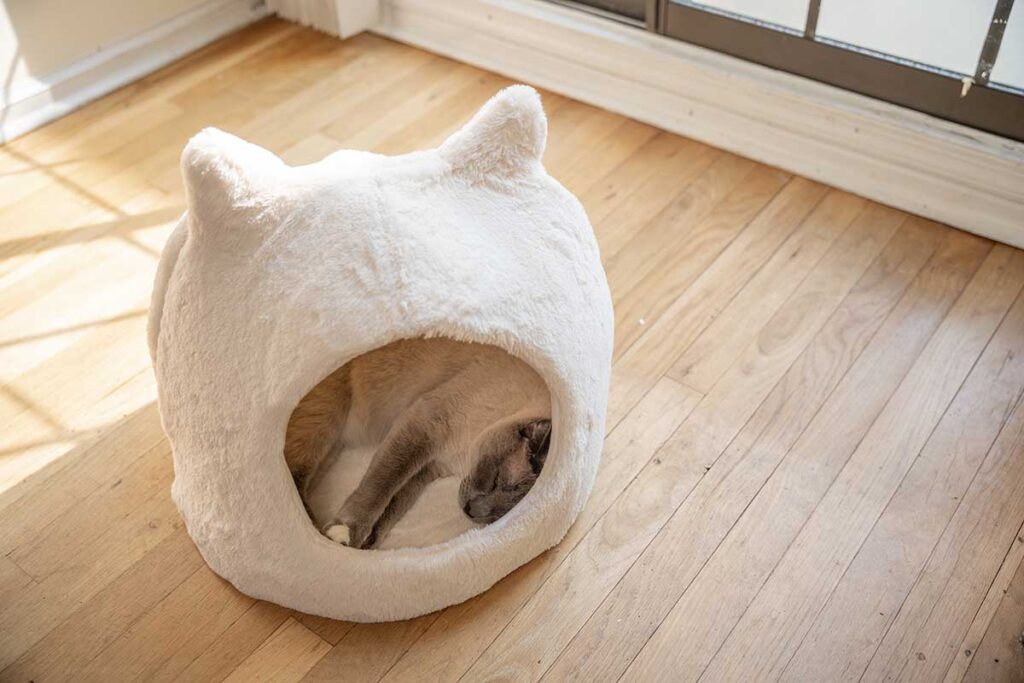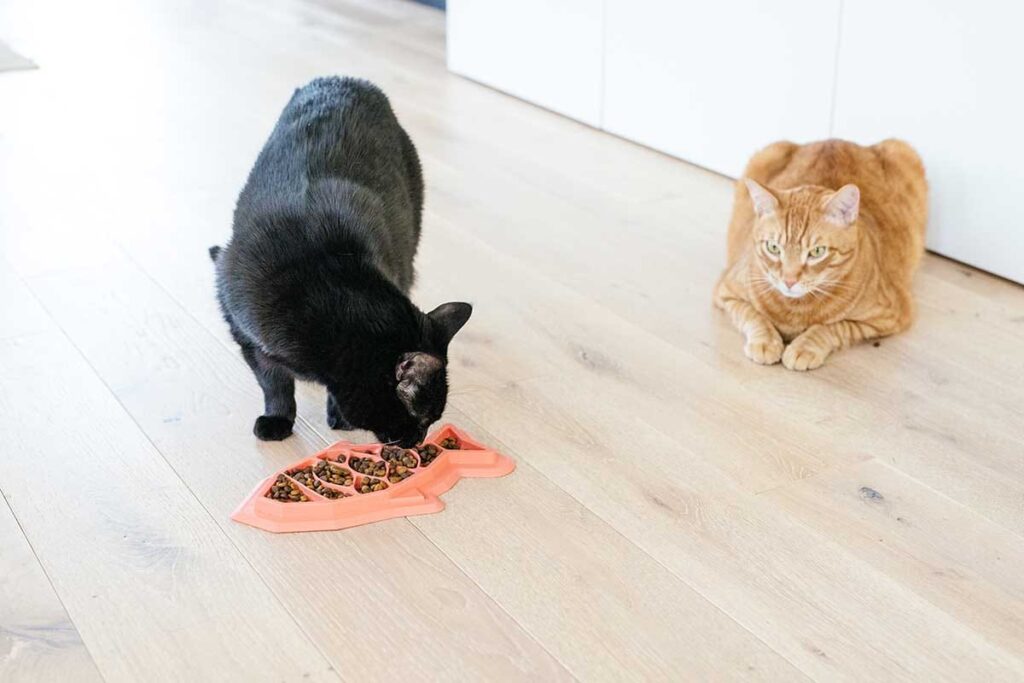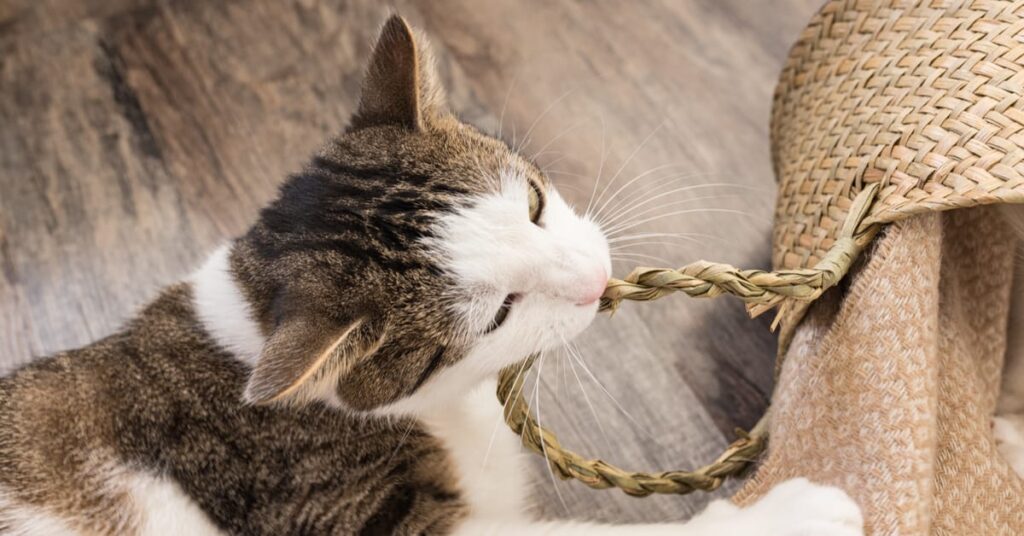Every cat parent has heard their feline friend retching. Sometimes it’s right after your cat eats, and sometimes it’s in the wee hours of the morning, waking you in a panic, wondering if Fluffy is ok.
“Why is my cat throwing up?” You might think, and if it’s a frequent occurrence, you’ll want to investigate. Before getting into the many common reasons cats vomit, it’s worth mentioning that many cats gag or cough, vomit, and regurgitate, and there are medical differences between them.
All Vomiting Is Not the Same

Gagging is when your cat sticks his neck out and makes those awful gagging sounds, but nothing comes out. Or, some frothy foam might come out, and they’ll usually swallow that again.
Regurgitation often happens right after your kitty eats. Frequent regurgitation can indicate a problem in the esophagus, and it may be because your kitty is eating too fast and gulping too much air along with dry food.
Vomiting is when your cat feels nauseous and then throws up. You’ll see the signs in pacing, repeated swallowing, and contracting stomach muscles before puking.
While you and I may call this behavior “throwing up” or vomiting, your veterinarian can spot nuances. It can be helpful for a diagnosis to video your cat in action.
8 Reasons Why Your Cat Throws Up

There are common causes for regurgitation, such as releasing hairballs, and more serious concerns, like inflammatory bowel disease and other gastrointestinal problems. Pet parents are in the best position to monitor your cat’s health and spot any patterns to share with your veterinarian.
Let’s take a look at some of the common reasons cats vomit. As to why they prefer to throw up on your carpet or bedspread, that’s a mystery.
1. Hairballs
If you hear (or see) your kitty hacking and finally expelling something that long, thin, and covered in kitty saliva, then there’s no need to worry. It’s only a gross hairball. Hairballs occur because your cat grooms himself, so they need to come back out.
You can reduce the amount of hair your cat swallows by more frequent brushing. However, talk to your veterinarian if he hacks up a hairball more than once or twice a month. Your kitty may benefit from a supplement.
2. Overate (or ate too fast)

Eager kitties who gulp down their food sometimes throw some of it back up. That’s because eating too fast often means your kitty swallows plenty of air along with their food. And because a cat’s stomach can’t accommodate everything, they throw up.
If they tend to throw up undigested food, it’s a sign they need to slow down. You can feed smaller portions throughout the day or use a slow feeder to encourage them to slow down. If you have multiple cats and one tends to eat the food of another, you might solve the frequent vomiting problem by feeding everyone in separate spaces, so they feel safe eating at a slower pace.
3. New Food
Did you recently switch your cat’s food? Maybe you opted for wet food over kibble or vice versa. Sudden food changes can cause an upset stomach. Veterinarians recommend making dietary changes gradually. For example, mix a small amount of the new food with the old food and gradually increase the new food over the course of several days to ease your cat’s digestive system into the new food.
4. Food Allergies
However, if your kitty’s eating the same food but frequent vomiting is now an issue, maybe your cat’s developed a food allergy or sensitivity. As you may know, food allergies can cause constipation, diarrhea, and general gastrointestinal problems.
Make notes of any change in your cat’s behavior. When did the potential intestinal issues start? Can you track them to your cat’s diet or other habit changes? Any detective work you can do can help your veterinarian narrow down the culprit.
5. Intestinal Parasites
Roundworms, hookworms, and other parasites can cause your cat to feel crummy and vomit. If your kitty has parasites, it may appear to eat regular meals but still lose weight. Your veterinarian may order x-rays or run other tests to diagnose the problem.
6. Stress
Stress affects pets too. Did you recently move or bring home a new family member? If so, your kitty may puke or hide. You can help them get comfortable with the changes by ensuring they know where the litter box is located and putting their favorite bed/games/blanket in a quiet location near you. Try to maintain their routines, and they’ll settle in.
7. Eating Something They Shouldn’t

Playful kittens will interchangeably chew on a string, computer cables, and plants. Any of these can lead to tummy troubles if they swallow things they can’t digest. A string can get wrapped around internal organs and cause blockages that require surgery to remove. Many common house plants can be toxic to pets. Even if they’re not poisonous, eating leaves can be hard to digest and appear as foreign objects on x-rays.
Human food can also make a kitty sick. For example, chocolate, caffeine, and garlic are on the “don’t feed to pets” list. It only takes a tiny amount to make your kitty very sick.
Kitty enrichment toys can keep your cat busy and engaged with safe toys to reduce time “exploring” (or chewing) on things they shouldn’t.
8. Serious Disease
Unfortunately, kitties can have kidney disease, hyperthyroidism, pancreatitis, or other serious diseases which can cause serious problems. Such diseases are more common in senior cats, and the symptoms include lethargy, unexplained weight loss, blood in the stool, and more frequent vomiting.
The bottom line is if your cat’s behavior changes, it’s time to make an appointment with your veterinarian. Your veterinarian will do a physical assessment and ask you questions about changes in your cat’s behavior. Based on their evaluation, they may run blood work, x-rays, or other tests to determine the underlying cause.

